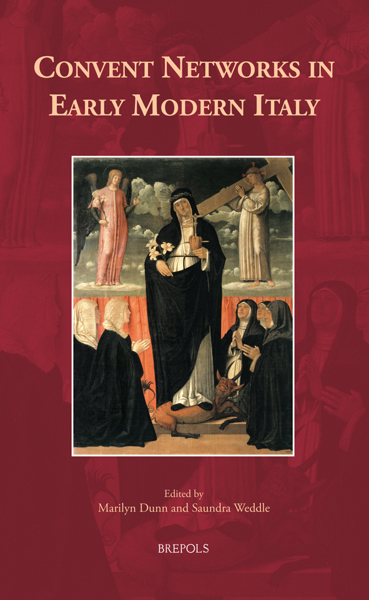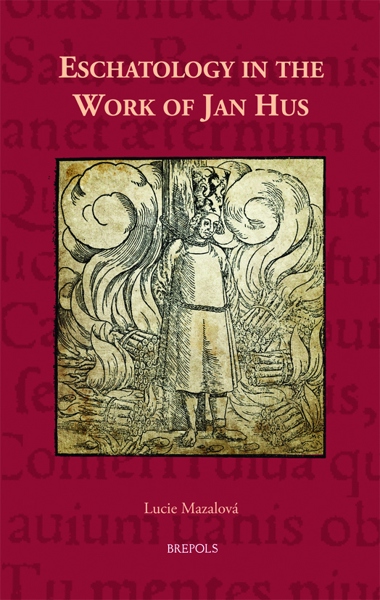
Relics, Identity, and Memory in Medieval Europe
Marika Räsänen, Gritje Hartmann, Earl Jeffrey Richards (eds)
- Pages: xii + 359 p.
- Size:156 x 234 mm
- Illustrations:17 b/w
- Language(s):English
- Publication Year:2016
- € 120,00 EXCL. VAT RETAIL PRICE
- ISBN: 978-2-503-55502-7
- Hardback
- Available
- € 120,00 EXCL. VAT RETAIL PRICE
- ISBN: 978-2-503-56203-2
- E-book
- Available
Explores the vital role of relics in the Middle Ages in creating community, identity, and memory.
"Summa summarum: ein Sammelband (...) in dem auch über Neuentdeckungen berichtet wird, die die Lektüre insgesamt lohnend machen." (Ralf Lützelschwab, in: sehepunkte 17 (2017), Nr. 3 [15.03.2017], URL: http://www.sehepunkte.de/2017/03/29496.html)
“Altogether, the volume contains much that is interesting. (…) the volume contains excellent scholarly work.” (Nils Holger Petersen, in The Medieval Review, 17.10.26)
“(…) each article stands beautifully on its own, and the volume has ample footnotes and a ‘Works Cited’ page that lists manuscripts, as well as primary and secondary sources useful for further investigations.” (Alice Isabella Sullivan, Parergon, 35/1, 2018, p. 222)
This volume contributes to current discussions of the place of relics in devotional life, politics, and identity-formation, by illustrating both the power which relics were thought to emanate as well as the historical continuity in the significance assigned to that power. Relics had the power to ‘touch’ believers not only as material objects, but also through different media that made their presence tangible and valuable. Local variants in relic-veneration demonstrate how relics were exploited, often with great skill, in different religious and political contexts. The volume covers both a wide historical and geographical span, from Late Antiquity to the early modern period, and from northern, central, and southern Europe.
The book focuses on textual, iconographical, archaeological, and architectural sources. The contributors explore how an efficient manipulation of the liturgy, narrative texts, iconographic traditions, and architectural settings were used to construct the meaningfulness of relics and how linguistic style and precision were critically important in creating a context for veneration. The methodology adopted in the book combines studies of material culture and close reading of textual evidence in order to offer a new multidisciplinary purchase on the study of relic cults.
Acknowledgments
Abbreviations
Introduction – MARIKA RÄSÄNEN
Perspectives on Relic Cults
Holy Corpses and the Cult of Relics – ARNOLD ANGENENDT
Narratives and Power
Dreams and the Discoveries of Relics in the Early Middle Ages: Observations on Narrative Models and the Effects of Authorial Context in the Revelatio Sancti Stephani – JESSE KESKIAHO
Paschal I and Saint Cecilia: The Story of the Translation of her Relics in the Liber pontificalis – GRITJE HARTMANN
A Woman’s Body for the Empire’s Salvation: The Translatio of the Empress Bathild’s Body and the Crisis of the Year 833 – MARTINA CAROLI
The Relics of Roman Churches in Nicolò Signorilis Descriptio Urbis Romae - Probably Rome’s Only Relic Inventory from the 14th Century – MARTIN BAUCH
Bishop Saints and Identity
Civic Cults of Local Reformist Bishops in Medieval Dalmatia: Success and Failure – ANA MARINKOVIĆ
Tracing the Heavenly Pater Patriae of Medieval Finland: The Relics of St Henry of Uppsala – TUOMAS HEIKKILÄ
Multiple Memories of St Thomas Aquinas’s Body
The Historia translationis sacri corporis Thome Aquinatis of Raymundus Hugonis: an Eyewitness Account and Its Significance – CONSTANT J. MEWS
The Memory of St Thomas Aquinas in Orvieto – MARIKA RÄSÄNEN
Ceremonies of Power: the Arrival of Thomas Aquinas’ Relics in Toulouse and Paris in the Context of the Hundred Years War – EARL JEFFREY RICHARDS
Index




